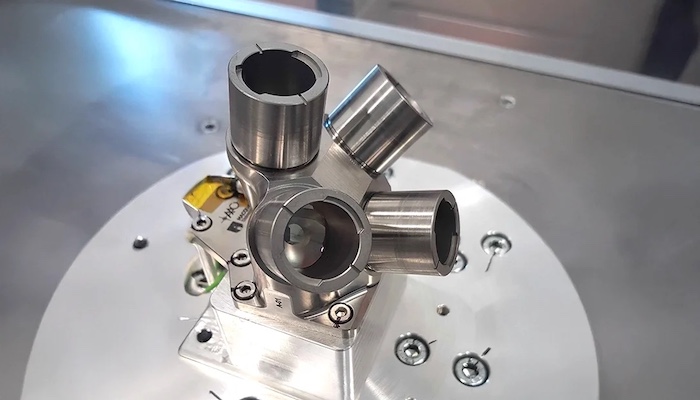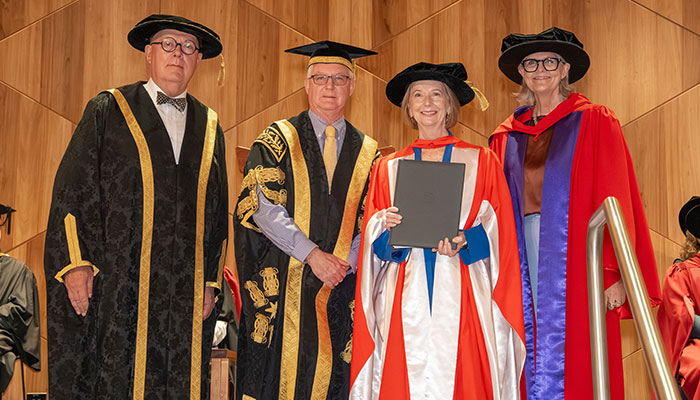Macquarie University’s Australian Astronomical Optics (AAO) has successfully completed space qualification of its ALOHA system – the critical optical component providing ‘laser vision’ to guide autonomous lunar landings in upcoming NASA missions.
AAO has partnered with Sydney-based navigation and autonomous systems manufacturer, Advanced Navigation, to develop this module for future moon landings.
The ALOHA (AAO LUNA Optical Head Assembly) system is made up of four precision telescopes designed to survive the extreme journey to the Moon and deliver laser beams that power a precision spacecraft navigation sensor, LUNA (Laser Unit for Navigation Aid).

Developed by Australian Astronomical Optics, the ALOHA system (pictured) has completed full space qualification.
“We’ve battle-hardened our ALOHA system to survive the intense journey to the Moon,” said Associate Professor Lee Spitler, Head of Space Projects at AAO.
“Its four space-qualified telescopes deliver the laser beams that power the LUNA sensor’s ‘sight’, providing the critical velocity and range data the Nova-C lander needs to stick the landing.”
The ALOHA system forms the optical heart of Advanced Navigation’s LUNA sensor, which has exceeded performance benchmarks in Earth-based trials.
LUNA (with ALOHA on board) is now entering final space qualification for the IM-4 mission to the lunar South Pole in 2027, run by US space exploration company Intuitive Machines.
Advanced Navigation CEO, Chris Shaw, says the collaboration is critical to the mission’s success.
“Our LUNA sensor aims to give lunar landers and rovers hyper-accurate ‘laser vision’ to see their own speed and position in the darkness of space, potentially making crashes a thing of the past and paving the way for safe, autonomous exploration,” he says.
During recent gruelling trials in Moon-like environments – including flights over Western Australia's Pinnacles Desert, which looks like the lunar surface, as well as shock, vibe and thermal vacuum tests in Europe’s deepest underground mine – the integrated LUNA system demonstrated surgical precision across a six-kilometre underground traverse with no GPS.
This technology marks a major breakthrough for autonomous space exploration, providing spacecraft with continuous, real-time data about their position and velocity without relying on GPS or pre-existing infrastructure.
AAO successfully showcased the ALOHA technology at last week’s International Astronautical Congress, in a proud example of Australian optical engineering enabling the next generation of lunar exploration and autonomous navigation in the world’s most extreme environments.



